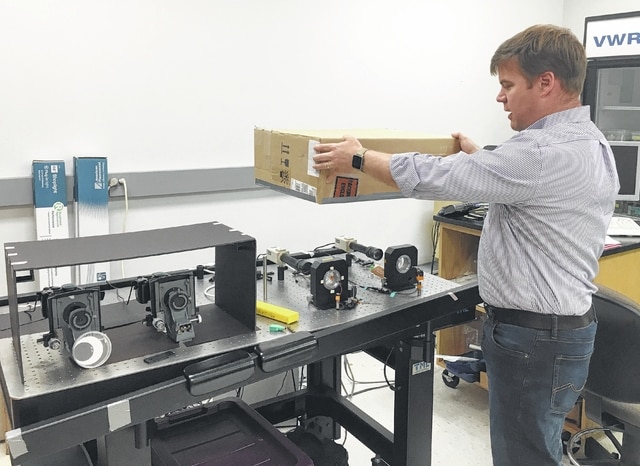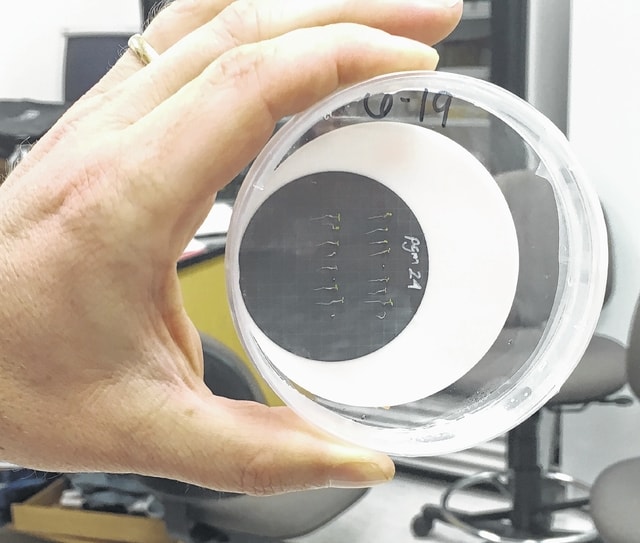

A Delaware resident and professor of botany and microbiology at Ohio Wesleyan University, Chris Wolverton, received exciting news about his NASA-supported research program last week.
His research has moved from what they call the “Flight Definition” phase — where different tests are run to assess all possible risks — to the “Flight Implementation” phase, where the program he designed will finally start to be put into motion.
Since coming to the university in 2002, Wolverton has researched how plants respond to messages from their surroundings, namely gravity, and adapt to grow better. Using the Arabidopsis plant — which he called the “fruit fly of plants” due to its fast growth rate — he spent years manipulating different variables in plant growth — different light types, odd angles, varying increments of light exposure — and studying the ways plants detect and respond to gravity.
He concluded that the weed-like plant used starch-filled sacks to sense gravity as it developed but, in order to truly study gravity’s effect on plants, he needed to take his research to the next level.
In early 2014, Wolverton submitted to NASA a proposal detailing his research and its applications. He proposed that they send two different kinds of plants — normal ones and mutants that don’t contain those starch sack sensors — to space in order to experiment with gravity manipulation and plant growth.
“For the normal plants we want to test their threshold, what’s the least amount of gravity they can detect,” Wolverton explained. “For the mutants, we want to figure out what their detection system is, how will they sense gravity without those starch sacks.”
“In a centrifuge on the space station, we’ll be able to add back anywhere from five one-thousandths of a G to two Gs to this plant in zero gravity. So we’re adding this tiny amount of gravity and saying, can you feel that? We’re basically using gravity as a way to probe their growth control system.”
Last February he received news that his study was one of a few that NASA selected to fund and send to be researched on the International Space Station.
It was then that the Flight Definition phase began. Wolverton and his student researchers began defining his process for NASA in what could be described as a very long, very complex version of a lab report. They conducted longevity experiments and collected and stored hundreds of samples to use, showing NASA the experiment’s feasibility and the equipment’s appropriateness and reliability.
It was just last Wednesday that he was notified that his project would be moving to the next step, the Flight Implementation phase. The OWU professor will soon fly out to NASA’s Ames Research Center in California where he will set up the experiment, gluing all the tiny seeds onto membranes, before he flies to Kennedy Space Center to hand it over to launch on SpaceX.
His project will also be making use of instruments at ESA’s (European Space Agency) Norway location. Sometime next spring he’ll visit the Norwegian Space Centre to utilize the unique hardware and work with some of their engineers.
Though most might assume that his research would only be used in space exploration and possible future agriculture, the project actually has a myriad of applications for life on earth.
“Once we understand what’s happening in their cells and the genes that regulate growth, we can start breeding or designing better crop plants, crops that can withstand drought and more heat, or plants that make better use of water and oxygen, which is helpful in times like these where there’s a lot of flooding,” Wolverton said.
Wolverton said the project is slated to launch with the SpaceX 13 mission which, at the earliest, would be in fall of 2017.



